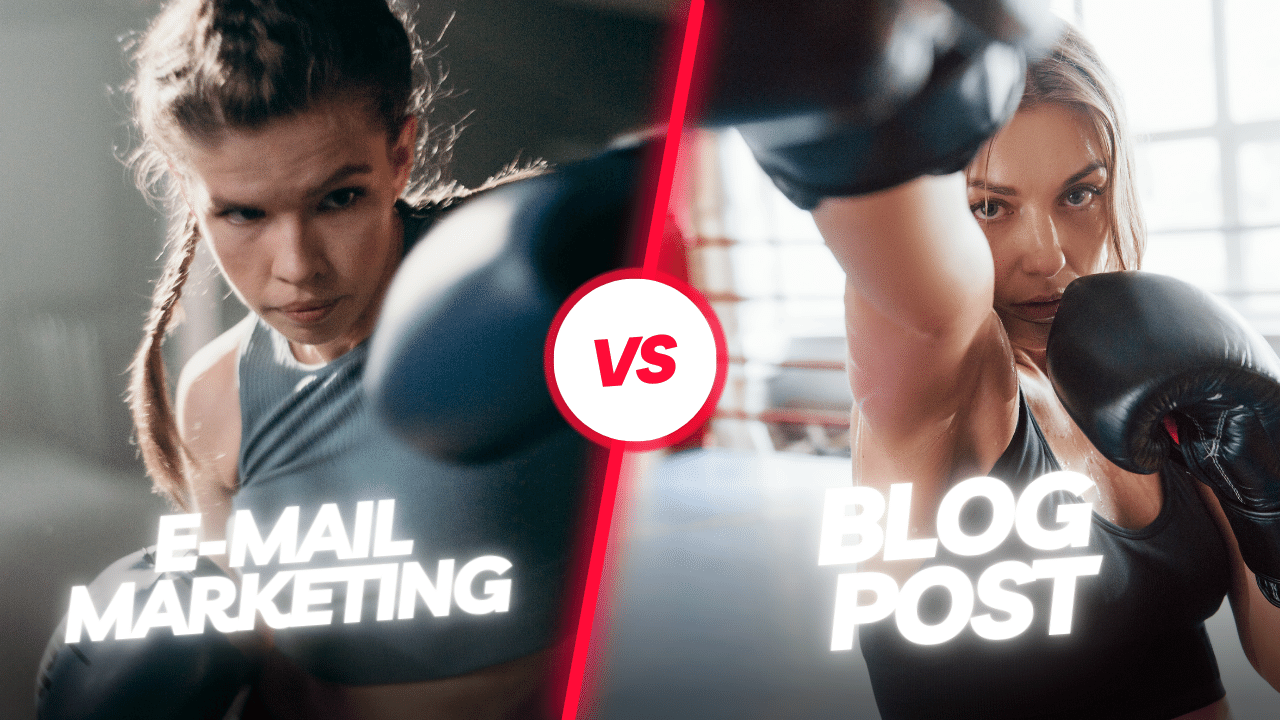SEO
Should You Use A Blog Or Email Marketing For Your Travel Brand?
In the digital age, marketing has become an essential component of any business strategy, including travel brands. With numerous avenues available for promoting your travel brand, it’s crucial to determine the most effective methods to reach your target audience. Two popular options for promoting travel brands are blogs and email marketing. Both approaches offer unique advantages and can contribute to the success of your travel brand. In this article, we will explore the benefits and considerations of using a blog or email marketing for your travel brand, helping you make an informed decision.
Table of Contents
- Introduction: The Importance of Effective Marketing
- Understanding Blogs and Email Marketing
- Advantages of Using a Blog for Your Travel Brand
- Increased Visibility and Brand Awareness
- Content Showcase and Storytelling
- Search Engine Optimization (SEO) Benefits
- Interactivity and Engagement
- Advantages of Email Marketing for Your Travel Brand
- Direct Communication with Subscribers
- Personalized and Targeted Messaging
- Higher Conversion Rates
- Tracking and Analytics
- Considerations When Choosing Between a Blog and Email Marketing
- Target Audience and Communication Preferences
- Content Strategy and Long-Term Goals
- Resource Allocation and Budget
- Conclusion
- FAQs (Frequently Asked Questions)
Introduction: The Importance of Effective Marketing
Marketing plays a crucial role in establishing and growing a travel brand. It enables you to connect with potential customers, create brand awareness, and drive bookings. In the digital landscape, where competition is fierce, choosing the right marketing channels becomes paramount to stand out from the crowd. Two popular options, blogs and email marketing, offer effective ways to reach and engage with your target audience.
Understanding Blogs and Email Marketing
Before diving into the advantages and considerations, let’s briefly understand the concepts of blogs and email marketing.
A blog is an online platform where you can publish and share relevant content related to your travel brand. It allows you to showcase your expertise, share travel stories, provide destination guides, and offer valuable insights to your audience. Blogs are typically designed to be regularly updated with fresh content, attracting visitors and generating organic traffic from search engines.
On the other hand, email marketing involves sending targeted messages and promotions directly to individuals who have subscribed to your email list. It allows you to maintain a direct line of communication with your audience, deliver personalized content, and nurture customer relationships. Email marketing campaigns can include newsletters, special offers, travel tips, and exclusive deals.
Advantages of Using a Blog for Your Travel Brand
Increased Visibility and Brand Awareness
A well-maintained blog can significantly increase the visibility of your travel brand. By consistently publishing high-quality content and optimizing it for search engines, your blog can attract organic traffic from individuals searching for travel-related information. This exposure not only enhances your brand’s visibility but also positions you as an authoritative source in the industry.
Content Showcase and Storytelling
Blogs provide an excellent platform to showcase your travel brand’s unique offerings and tell compelling stories. Through engaging content, vivid imagery, and immersive narratives, you can captivate readers and create an emotional connection with your audience. Sharing firsthand experiences, travel itineraries, and customer testimonials on your blog can inspire and motivate potential travelers to choose your brand for their next adventure.
Search Engine Optimization (SEO) Benefits
Creating valuable and relevant content for your blog helps improve your website’s search engine rankings. By incorporating targeted keywords, optimizing meta tags, and building backlinks, you can enhance your blog’s SEO performance. When your blog appears higher in search engine results, it increases the chances of attracting organic traffic, driving more potential customers to your website.
Interactivity and Engagement
One of the advantages of a blog is the ability to engage with your audience through comments and social media integration. Readers can leave comments, ask questions, and share their own travel experiences. By responding to comments and fostering a sense of community, you can build stronger connections with your audience and encourage them to become brand advocates.
Advantages of Email Marketing for Your Travel Brand
Direct Communication with Subscribers
Email marketing provides a direct line of communication with individuals who have expressed interest in your travel brand by subscribing to your email list. Unlike social media platforms or search engines, where algorithms can limit your reach, email allows you to deliver your message directly to your subscribers’ inboxes. This personalized approach fosters a sense of exclusivity and strengthens the bond between your brand and your audience.
Personalized and Targeted Messaging
With email marketing, you can segment your subscriber list based on various criteria such as demographics, interests, or past travel behavior. This segmentation enables you to send highly personalized and targeted messages to specific groups within your audience. By delivering relevant content, personalized recommendations, and exclusive offers, you can maximize the impact of your marketing efforts and increase conversion rates.
Higher Conversion Rates
Studies have shown that email marketing consistently outperforms other marketing channels when it comes to conversion rates. Since you are communicating directly with individuals who have already expressed interest in your brand, the likelihood of converting them into customers is higher. By carefully crafting compelling email campaigns and incorporating persuasive call-to-action buttons, you can drive bookings, increase revenue, and measure the success of your marketing campaigns.
Tracking and Analytics
Email marketing platforms provide robust tracking and analytics capabilities that allow you to monitor the performance of your campaigns. You can track metrics such as open rates, click-through rates, and conversions, gaining valuable insights into the effectiveness of your email marketing strategy. This data empowers you to make data-driven decisions, optimize your campaigns, and continually improve your marketing efforts.
Considerations When Choosing Between a Blog and Email Marketing
When deciding between a blog and email marketing for your travel brand, several factors should be taken into account:
Target Audience and Communication Preferences
Consider the preferences of your target audience. Some individuals may prefer reading blog posts and engaging with content on your website, while others may prefer receiving personalized emails directly in their inbox. Understanding your audience’s communication preferences can help you choose the most effective marketing channel to reach and engage with them.
Content Strategy and Long-Term Goals
Evaluate your content strategy and long-term goals for your travel brand. A blog can be an integral part of your content marketing strategy, allowing you to consistently create and share valuable content. Email marketing, on the other hand, can complement your blog by delivering targeted messages and promotional offers. Align your marketing channels with your content strategy to ensure a cohesive and comprehensive approach.
Resource Allocation and Budget
Consider your available resources and budget when deciding between a blog and email marketing. Blogs require regular content creation, search engine optimization, and website maintenance. Email marketing involves managing subscriber lists, designing email campaigns, and monitoring analytics. Assess your resources and budget to determine which approach is feasible and sustainable for your travel brand.
Conclusion
In conclusion, both blogs and email marketing can be valuable tools for promoting your travel brand. Blogs provide increased visibility, content showcase, SEO benefits, and interactivity with your audience. Email marketing offers direct communication, personalized messaging, higher conversion rates, and tracking capabilities. To make an informed decision, consider your target audience’s preferences, your content strategy, and available resources. Ultimately, a combination of both approaches might provide the most effective marketing strategy for your travel brand, allowing you to engage with your audience through different channels.
FAQs (Frequently Asked Questions)
- Q: How often should I publish new blog posts?
- A: The frequency of publishing new blog posts depends on your content strategy and available resources. Consistency is key, so aim for a schedule that you can sustain in the long term, whether it’s once a week, twice a month, or any other frequency.
- Q: Can I use email marketing and a blog together?
- A: Absolutely! Email marketing and a blog can work hand in hand to maximize your marketing efforts. Use your blog to attract visitors and build your email subscriber list, then use email marketing to deliver personalized content and exclusive offers.
- Q: How can I measure the success of my email marketing campaigns?
- A: Email marketing platforms provide analytics that track metrics like open rates, click-through rates, and conversions. By analyzing these metrics, you can assess the effectiveness of your campaigns and make data-driven decisions to optimize your strategies.
- Q: Which is more cost-effective, a blog or email marketing?
- A: The cost-effectiveness of a blog versus email marketing depends on your specific circumstances. Blogs require ongoing content creation and website maintenance, while email marketing may involve costs associated with email service providers. Assess your resources and budget to determine the most cost-effective approach for your travel brand.
- Q: How can I encourage engagement on my blog and email campaigns?
- A: Encourage engagement by asking questions, encouraging comments, and responding to feedback on your blog. In your email campaigns, include interactive elements such as polls or surveys and create compelling calls-to-action that prompt recipients to take action.

